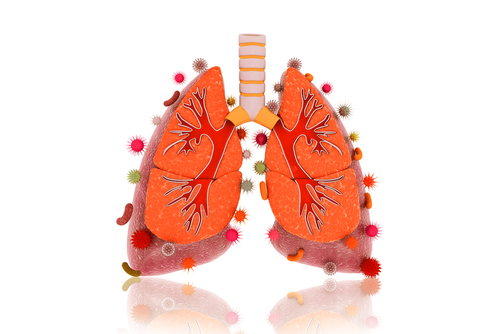Many bronchiectasis patients in Europe are not being tested for nontuberculous mycobacteria (NTM) infection before starting macrolide antibiotic treatment, as recommended by current guidelines, according to a small survey of physicians in five European countries.
While most physicians understood the increased risk and health impact of NTM lung disease, more than half did not test for NTM before initiating the antiobiotic therapy. As such, increased awareness is needed as well as compliance to current guidelines to mitigate the risk of drug-resistent NTM, researchers said.
The study, “Non-tuberculous mycobacterial lung disease in patients with bronchiectasis: perceived risk, severity and guideline adherence in a European physician survey,” was published in the journal BMJ Open Respiratory Research.
People with bronchiectasis are at a particularly high risk of infections by NTM, a set of more than 160 species of bacteria found naturally in the environment. NTM lung disease is associated with worsened lung function and more hospitalizations, regardless of other concurrent conditions.
Lung infections caused by NTM are considered therapeutically challenging and often become chronic.
While long-term single therapy with macrolides, a class of antibiotics, is often used to prevent exacerbations in bronchiectasis patients, it is not recommended for treating NTM lung disease. This is due to the increased risk of NTM becoming resistant to macrolides, which lowers the chances of cure.
Based on this evidence, European guidelines for the management of bronchiectasis recommend regular testing for NTM infection, including before the initiation of long-term macrolide therapy.
However, physicians’ perception of the risk of NTM lung disease in people with bronchiectasis and its impact on NTM testing practices have not been determined.
In the study, researchers from the NTM Network European Trials group (NTM-NET) set out to assess physicians’ perception of the risk and severity of NTM lung disease and current testing practices in adults with bronchiectasis.
NTM-NET promotes clinically oriented research in the field of NTM diseases worldwide.
The online survey, carried out in the U.K., Germany, Italy, France, and the Netherlands, was designed for pulmonologists, the largest group being hospital-based pulmonologists who had treated at least 10 adults with bronchiectasis in the preceding year.
The physicians were given a financial incentive to complete the survey. The target number of completed surveys was 280 — 60 each from U.K., Germany, Italy, and France, and 40 from the Netherlands.
Physicians reported treating an average of 51 bronchiectasis patients (ranging from 31 in the Netherlands to 66 in the U.K.) and 10 patients with NTM lung disease — ranging from four in the Netherlands and 17 in Germany — over the preceding 12 months.
Most (74%) reported to have personally treated at least one patient with NTM lung disease during this period. Those treating more bronchiectasis patients also significantly managed more patients with NTM lung disease.
Results showed that 87% of the surveyed physicians (ranging from 77% in Italy to 93% in the Netherlands) considered that their bronchiectasis patients were at particularly high risk of NTM infection. However, this was perceived as a moderate risk, compared with the risk of other respiratory microbes such as Pseudomonas aeruginosa (ranked as the greatest risk).
Notably, surveyed physicians generally agreed that NTM lung disease significantly worsens lung function (89%), and increases morbidity and hospitalizations (84%).
Also, 61% indicated that NTM lung disease significantly impacted mortality and a quarter of respondents was unsure about such an impact.
Most physicians (85%) tested at least some of their bronchiectasis patients for NTM infection, but 38% (ranging from 24% in Germany to 66% in the U.K.) did so before initiating macrolide single therapy.
Overall, while 94% of physicians reported following current guidelines, 68% did not test for NTM prior to initiating macrolide single therapy.
In addition, the data showed that physicians managing more patients were more aware of NTM, and those who did not test their patients for NTM tended to manage fewer patients with bronchiectasis or NTM.
“This reinforces the idea that [NTM lung disease] should be managed in collaboration with physicians with expertise in the treatment of these patients as recommended in national guidelines in the UK and USA,” the researchers wrote.
The findings also suggest that “education of physicians, alongside promotion and enforcement of current guidelines is necessary,” they added.
The team noted that the study had some limitations, including the small number of surveyed physicians relative to the European population.

